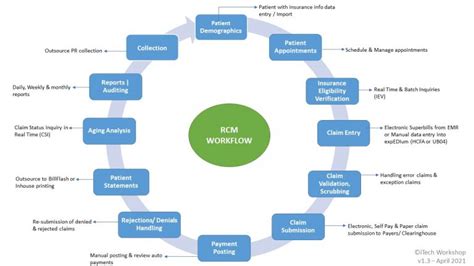Global Health Reimbursement: A Step-by-Step Guide
Navigating global health reimbursement can feel like traversing a complex maze. Different countries have vastly different healthcare systems, insurance coverage, and reimbursement processes. This guide provides a step-by-step approach to understanding and managing health reimbursement on a global scale, whether you're an individual traveling abroad, a multinational corporation managing employee benefits, or a researcher investigating cross-border healthcare financing.
Understanding the Landscape of Global Health Reimbursement
Before delving into the steps, it's crucial to grasp the diverse landscape. Healthcare systems vary dramatically – from universal healthcare models (like those in Canada and the UK) to largely private systems (like the United States). This impacts how healthcare costs are covered and reimbursed. Additionally, international regulations, local laws, and insurance policies all play a role.
1. Pre-Trip Planning: The Foundation of Smooth Reimbursement
Before embarking on any international travel, meticulous planning is key to mitigating potential financial burdens related to healthcare.
-
Travel Insurance: This is arguably the most crucial step. Comprehensive travel insurance should cover medical emergencies, evacuations, and repatriation. Carefully review the policy's coverage details, including exclusions and limitations, especially regarding pre-existing conditions. Ensure the policy covers the regions you'll be visiting and the types of activities you'll be undertaking.
-
Health Records: Compile a comprehensive record of your medical history, including allergies, medications, and any pre-existing conditions. Translate these records into the local language of your destination if necessary. This information is vital in emergency situations.
-
Emergency Contacts: Establish a network of emergency contacts, including family, friends, and your insurance provider. Ensure they have access to your itinerary and health records.
-
Local Healthcare Providers: Research healthcare providers in your destination. Familiarize yourself with local emergency services (equivalent of 911) and hospitals.
The Reimbursement Process: A Step-by-Step Guide
The actual reimbursement process can vary significantly based on your insurance provider and the specific circumstances of your healthcare needs. However, a general framework usually includes these steps:
2. Seeking Medical Attention: Documenting Everything
When you receive medical attention abroad, meticulous documentation is paramount.
-
Obtain Receipts and Bills: Request detailed receipts and bills for all medical services, medications, and transportation. These documents should clearly state the date of service, the provider's name and address, and a detailed breakdown of charges.
-
Medical Reports: Secure detailed medical reports from healthcare providers outlining your diagnosis, treatment, and prognosis. These reports are crucial for validating your claim.
-
Preserve Evidence: Retain all related documents, including flight tickets (if medical attention was required due to travel-related illness), and any communication with your insurance provider.
3. Submitting Your Claim: Navigating the Paperwork
Once you return home, the reimbursement process begins.
-
Review Your Policy: Thoroughly review your travel insurance policy to understand the claims process. Note any specific forms or documents required.
-
Complete the Claim Form: Accurately and completely fill out the claim form provided by your insurance provider. Ensure all information is correct and consistent with the supporting documentation.
-
Submit Your Documents: Submit your completed claim form along with all supporting documentation – original receipts, medical reports, etc. – as instructed by your insurer. Follow the provider's specified methods of submission (mail, online portal, etc.).
4. Following Up: Patience and Persistence
-
Track Your Claim: Keep track of your claim's progress. Contact your insurance provider if you haven't received an update within the expected timeframe.
-
Address Any Issues Promptly: If your claim is rejected or partially reimbursed, address any issues promptly by providing additional information or clarification as requested.
Frequently Asked Questions (FAQ)
What if my insurance doesn't cover the entire cost?
If your insurance doesn't cover the entire cost, you might need to explore options like appealing the decision, seeking additional coverage, or considering payment plans with the healthcare provider. You may also have to cover the remaining expenses out-of-pocket.
How long does the reimbursement process usually take?
The processing time varies depending on the insurance provider and the complexity of your claim. It could range from a few weeks to several months.
Can I use my domestic health insurance abroad?
While some international health insurance plans offer global coverage, relying solely on domestic insurance abroad is often risky. Many domestic plans have limited or no coverage outside your home country. Always check your policy’s international coverage details.
What are the potential pitfalls to avoid?
Common pitfalls include insufficient insurance coverage, inadequate documentation, failure to follow the claims process correctly, and delays in communication.
This comprehensive guide provides a roadmap for navigating the often-complex world of global health reimbursement. Remember that thorough planning and meticulous record-keeping are key to a smoother and less financially stressful experience. Always consult your specific insurance policy and contact your provider directly for clarification on their procedures and coverage specifics.

